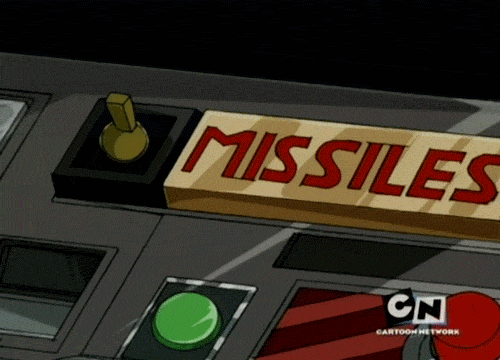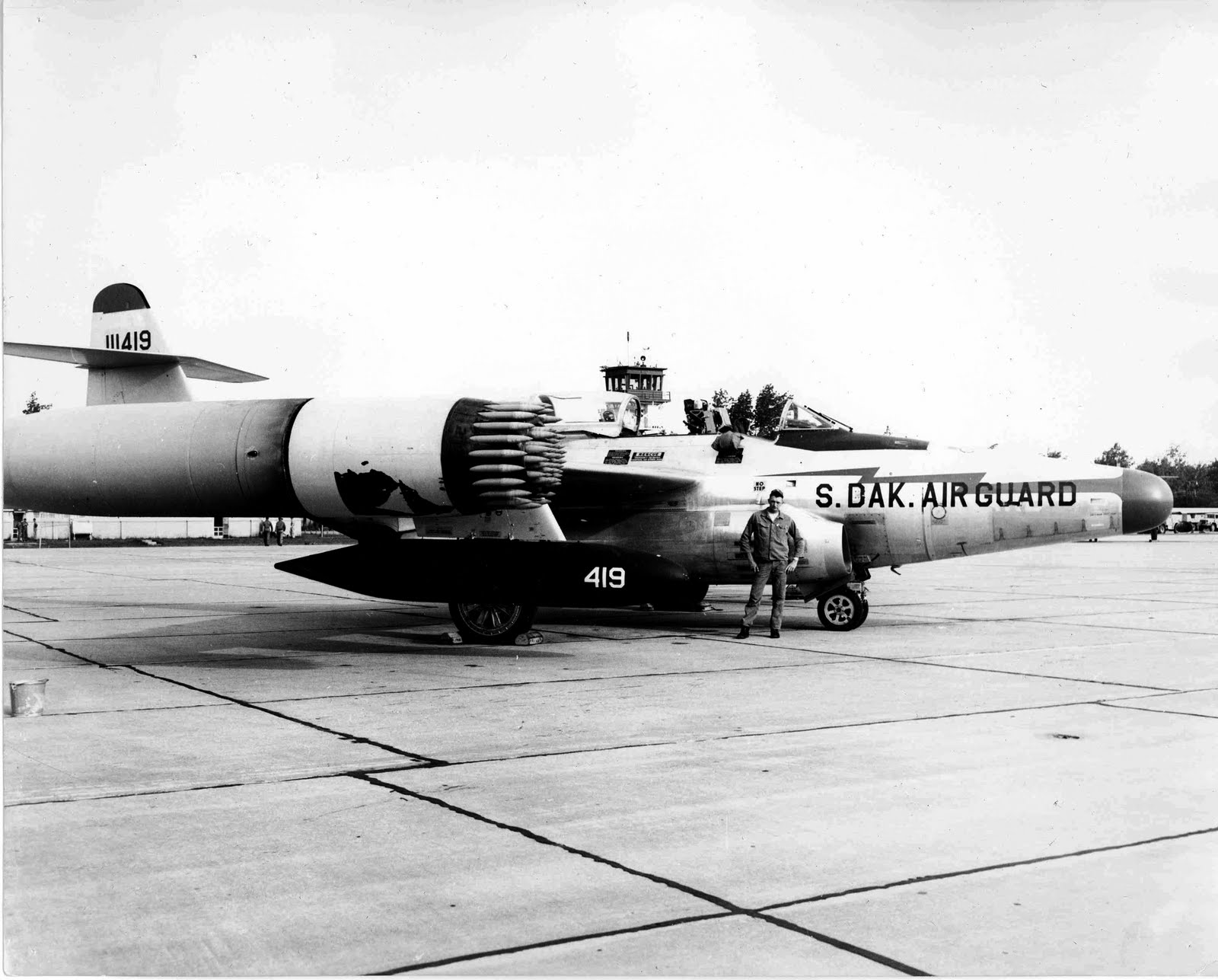What I love about the Scorpion is that it's a perfect product of its time. The first few models, the F-89A, F-89B, and F-89C, were all armed with six 20mm cannons in the nose. However, lessons being learned in Korea quickly showed that cannons simply weren't going to cut it for a fighter tasked with intercepting hordes of Russian bombers streaming in from the Arctic, so another solution had to be found.
At the time, the idea of radar aimed, unguided rockets was a somewhat popular solution. North American was using it in the F-89D, trading out the Sabre's six Browning .50 caliber machine guns for a retractable box of 24 rockets under the nose, and adding a larger radar to aim them. Lockheed was doing it too, converting their somewhat lackluster F-94As and F-94Bs into the F-94C Starfire by replacing their guns with four packs of six rockets clustered around the nose and a larger radar. Even Canada got into the act, with the Avro CF-100 Mk4, mounting pods of twenty-nine rockets each on its wingtips (although retaining the machine guns of previous models).
All that to say that when Northrop's engineers where looking for ways to make the Scorpion into the bomber killing interceptor the Air Force was asking for, unguided rockets seemed like a perfectly reasonable idea. I wish there were transcripts of some of those design meetings. While I assume that the final quantity of rockets was largely dictated by factors such as wing spar strength and aerodynamics, I want to believe that the plan went something more like this:


Sales and Marketing: "Lockheed and North American are doing rockets. Even Avro is doing rockets. The Scorpion needs rockets! How many can we get on there?"
Lead Engineer: "Well, I heard the Sabre and Starfire both have about twenty-four, but they're on the nose. I bet would could at least double that."
Marketing: "That's no good, the Canucks have twenty-nine on their bird, and kept the guns. You aren't going to let a bunch of maple-syrup drinkers beat good old American ingenuity, are you?"
Lead Engineer pulls out slide ruler, starts doing some calculations. "Okay, we already reinforced the wing spars, and put some big fuel tanks on the wingtips. If we enlarge those a little more, move half the fuel somewhere else, we can probably put about fifty rockets in a side.
Marketing: "Fifty a side? That's more like it! But, give it a little more, just for good measure."
Lead Engineer: Sighs, pushes glasses up, does more math. "Fine. How about fifty-two?"
Marketing: "Can we maybe hang a few more under the wings?"
Lead Engineer: "Sure, why not?"
And thus, in my imagination, is how the F-89D, with fifty-two rockets podded in each wingtip, came to be.
 |
| F-89D of the South Dakota Air Guard. The aerodynamic fairing over the front section of the rocket pod has been removed to show off all fifty-two rockets. |
If ever a fighter embodied the Macross Missile Massacre trope, it was this one. With fire control settings allowing for one, two, or three total volleys, it was entirely possible to ripple off an entire rocket load in a single pass.
Later variants didn't really dial back the crazy much, either. The F-89H lost thirty-one rockets from each pod, but gained three guided missiles (GAR-1 and GAR-2, later AIM-4 Falcons) in their place. The missiles were stored inside the pod until ready for launching, at which point they hinged out into the airstream to be fired. Normally three heat seekers and three radar guided missiles were carried, with the thought that if one missed, the other would probably hit.

And then there was the F-89J. A major update of F-89D airframes, the -J lost the rockets entirely, although it kept the podded missiles, but in their place, it gained the ability to carry the Genie nuclear air-to-air missile. Because if you couldn't knock down bombers with a volley of rockets that would make a '90s anime fan say "that looks a little excessive" then shooting a nuclear missile at them makes perfect sense! As mentioned previously, the F-89J became the only American aircraft to fire a Genie during the Operation Plumbbob tests.
Really, what I love about the F-89 is what I love about a lot of aircraft from the '50s and '60s era of aviation: the sheer lunacy, coupled with engineering brilliance, that was so often on display in solving problems. Well, that and because the actual aviation embodiment of this gif makes me smile every time I think about it.


No comments:
Post a Comment